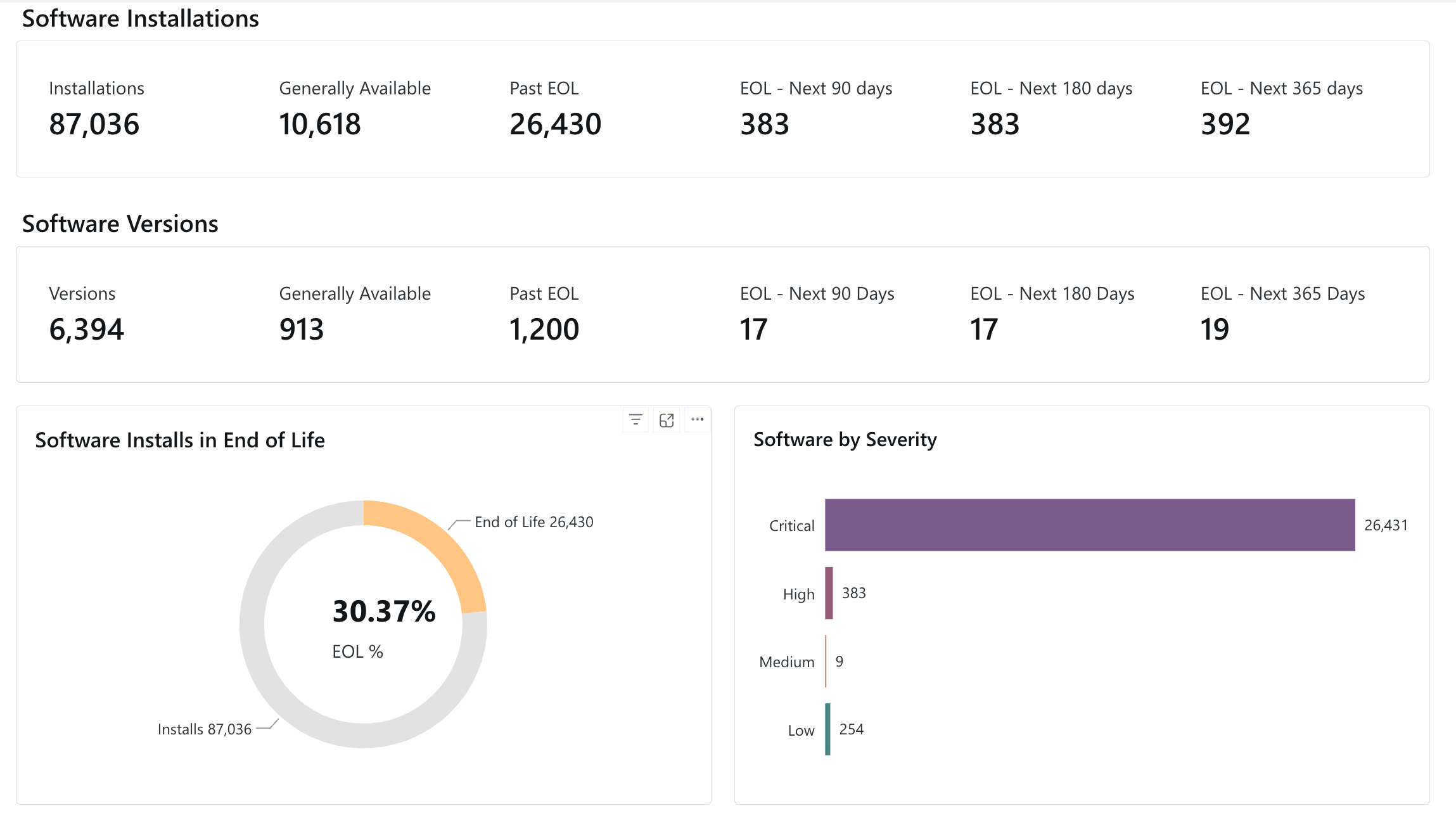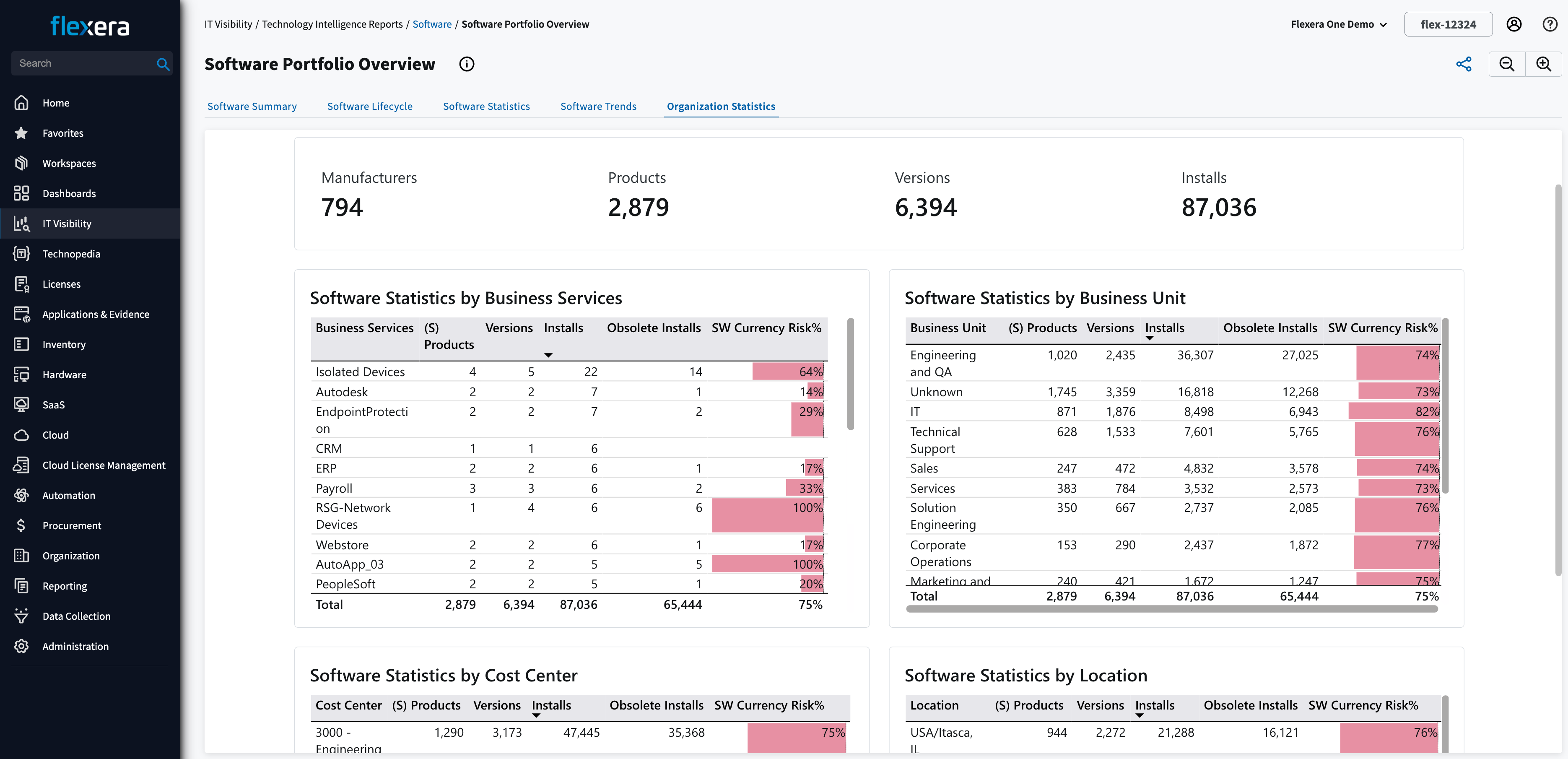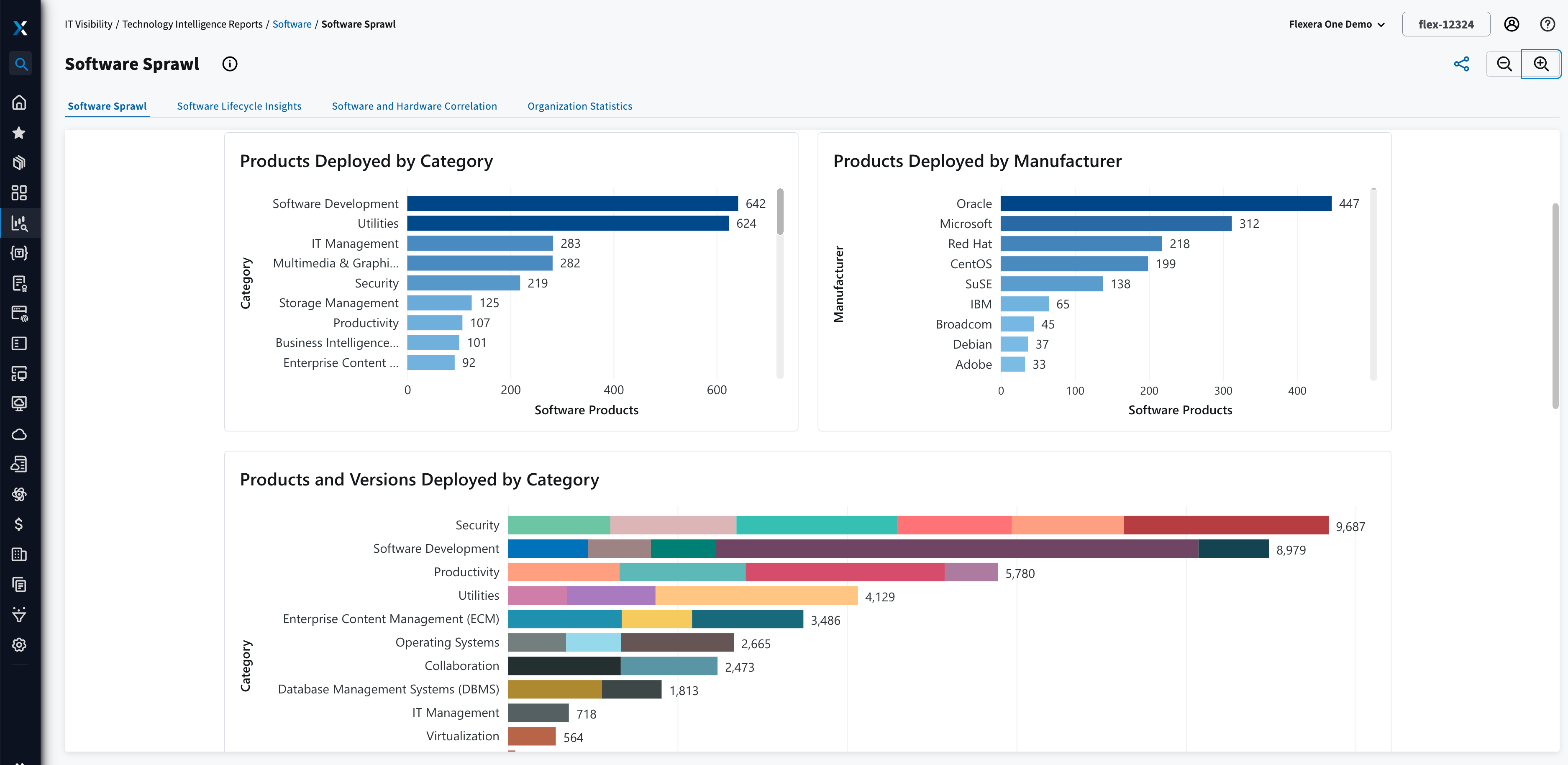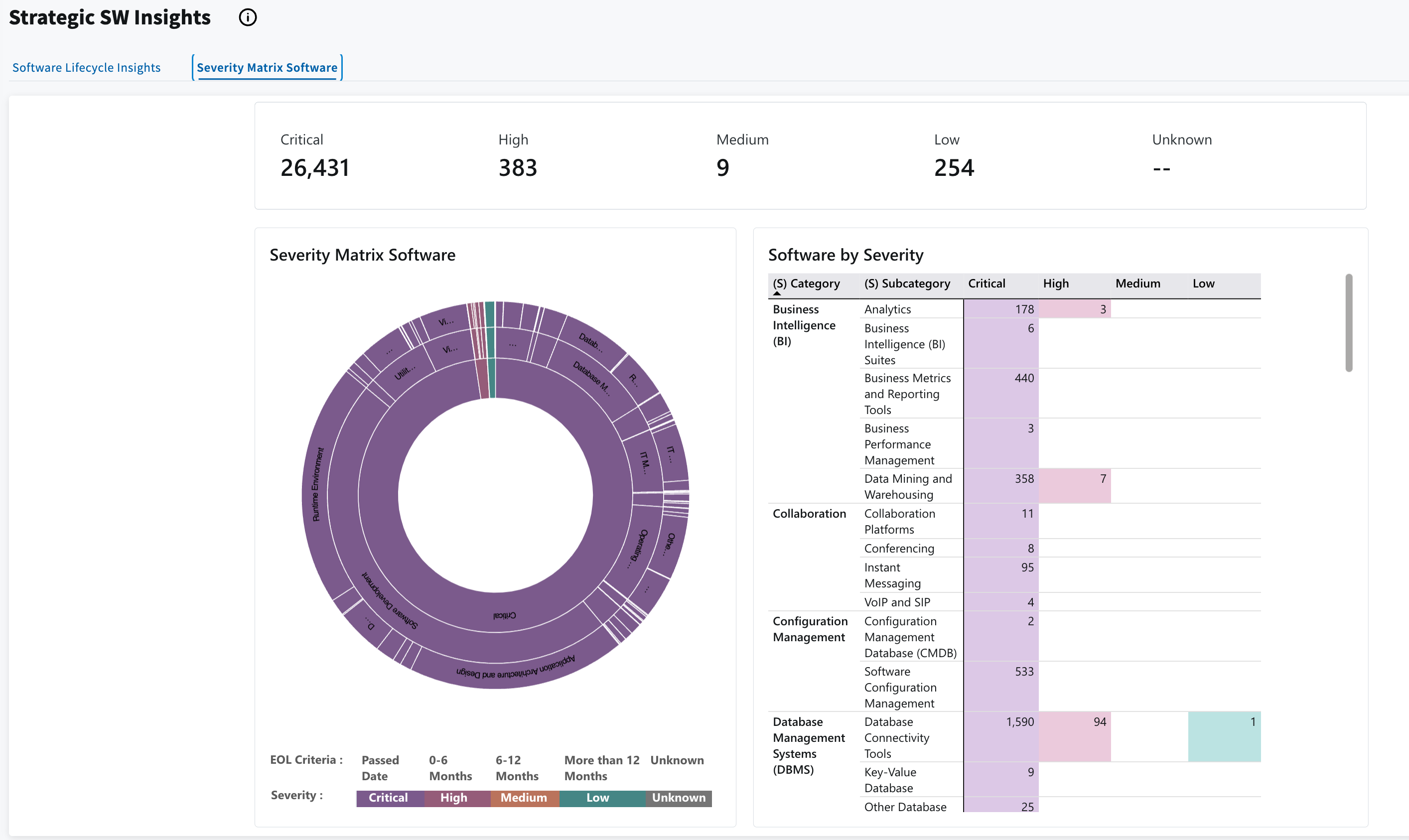Accurate IT inventory
Achieve accurate IT asset visibility & discovery
Flexera has helped thousands of customers quickly inventory their hybrid IT environment to have accurate data for renewal negotiations, quickly defend against vendor audits, identify cost optimization opportunities, improve CMDB data quality and more.
Recommended Solutions
Automate discovery of technology assets across your hybrid IT estate
IT Asset Discovery
ASSET DISCOVERY
Discover complex IT environments with ease
Centralized visibility into IT estates is a major challenge for most businesses and it starts with discovering all the technology assets littered throughout the organization. Reliance on manual processes is not only inefficient but delivers inaccurate and outdated information, leading to overspending and increased risk. Businesses need multiple ways to inventory their environment and quickly discover IT assets and usage, leveraging existing infrastructure with pre-built integrations across the hybrid IT environment.

IT Data Normalization and Enrichment
IT DATA NORAMLIZATION AND ENRICHMENT
Leverage essential IT market data effectively
Without consistent data, organizations risk non-compliance with financial, regulatory or sustainability requirements and difficulty adapting to changing business needs and increased security risks. Your IT needs to speak a common language through normalization, with definitive names, models, versions and editions of your hardware, software and SaaS. A carefully curated and aggregated IT taxonomy enables informed decision-making and improved risk mitigation.

Business Service Mapping
BUSINESS SERVICE MAPPING
Meet regulatory requirements and save costly penalties
Whether improving IT service management and CMDBs, prioritizing security and vulnerability mitigation or planning cloud migration, understanding your IT asset dependencies is key to lowering risk and driving business success. Accurate technology data about your environment helps you prioritize and increase project success. Knowing which business services depend on which applications is integral to IT organizations.


Build a reliable IT inventory
Gain insight into your technology environment
Share the same IT asset inventory information across systems, workflows, reports and stakeholders with Flexera One. Our data normalization leverages Technopedia™, the largest and most comprehensive technology data reference catalog. This foundation enables quick and effective decision-making for enterprise technology, providing a complete categorized listing of all your hardware, software, SaaS, and cloud inventory, eliminating confusion and ensuring all your systems communicate seamlessly.
I used to dread internal audits, but with [Flexera], I say ‘bring it on.’ Our ability to make stakeholders self-serve the information they used to come to us for has been transformational to our ability to execute and innovate.
Frequently asked questions
Data normalization is a systematic approach to refining and structuring raw IT data, transforming it into a consolidated, categorized listing of hardware and software. This process ensures uniformity, accuracy and streamlined IT asset visibility, enabling organizations to derive actionable insights, make informed decisions and maintain a clear view of their IT landscape. It's a cornerstone for achieving optimal IT governance and risk management. For more information, see our glossary here.
A CMDB is a core repository that serves as a data silo in an organization, keeping all the information about the company’s IT environment. This database is purposely built to manage configuration. A CMDB offers you a central place to store data related to your IT infrastructure and configuration assets. Learn more here.
The main difference between ITAM and CMDB is their purpose. ITAM is designed to monitor the procurement, implementation, maintenance and disposal of your IT assets, while CMDB monitors the characteristics, associations and dependencies of configuration items, giving you a clear picture of the effect of variations and occurrences across your IT infrastructure. Learn more here.
While both terms indicate phases where support diminishes for a product, they have distinct meanings:
- End of life (EOL): This is the date after which a product will no longer be sold or renewed. However, it might still receive some form of support, such as security patches
- End of support (EOS): This date marks the complete cessation of all support services for the product. After this date, no new patches, updates or fixes will be released, even for critical vulnerabilities
To learn more, see our glossary here.
Informing IT, Transforming IT
Industry insights to help keep you informed
Gain accurate IT inventory
Our team is standing by to discuss your requirements and deliver a demo of our industry-leading platform.

